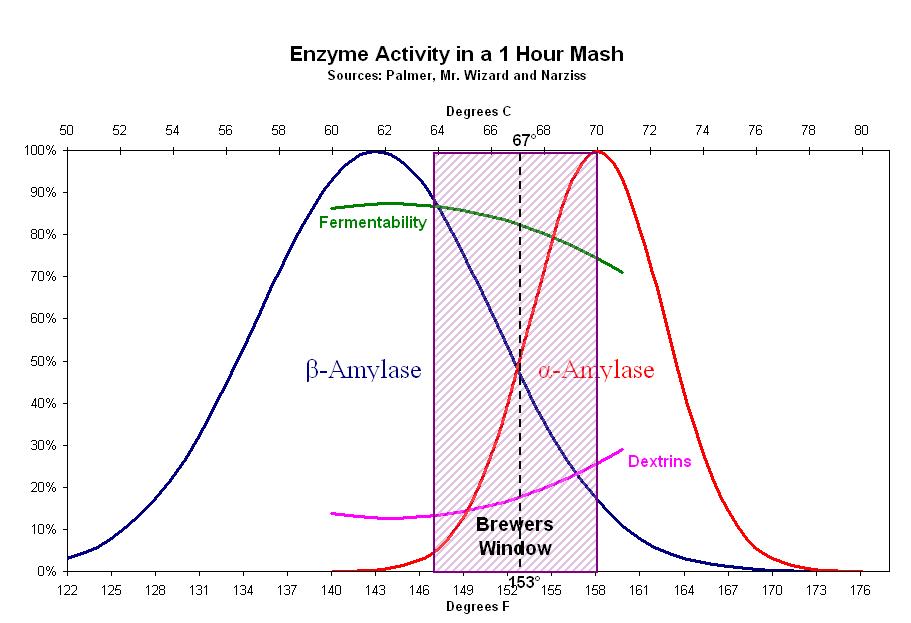mlee0000
Well-Known Member
Forgive me if this topic has been covered before. I searched and could not find anything...
I was going to attempt a mash in a 5 gallon bucket, but planning for heat loss and starting at a higher temperature, say 160 degrees. What is the benefit of holding a constant mash temp at 153 over having a constant heat loss and hitting all temperatures between 160 and 135? This should have an equal amount of time in the alpha range and the beta range, leading to a mix of fermentable sugars and unfermentable sugars.
I would guess that losing 15-25 degrees of heat over an hour would be about right. I am heating some water to determine the heat loss of the 5 gallon bucket, as I type this. I will post back with the data shortly.
Is there something I'm missing here? Is there a reason why mashing with a constant heat loss wouldn't work?
I was going to attempt a mash in a 5 gallon bucket, but planning for heat loss and starting at a higher temperature, say 160 degrees. What is the benefit of holding a constant mash temp at 153 over having a constant heat loss and hitting all temperatures between 160 and 135? This should have an equal amount of time in the alpha range and the beta range, leading to a mix of fermentable sugars and unfermentable sugars.
I would guess that losing 15-25 degrees of heat over an hour would be about right. I am heating some water to determine the heat loss of the 5 gallon bucket, as I type this. I will post back with the data shortly.
Is there something I'm missing here? Is there a reason why mashing with a constant heat loss wouldn't work?



